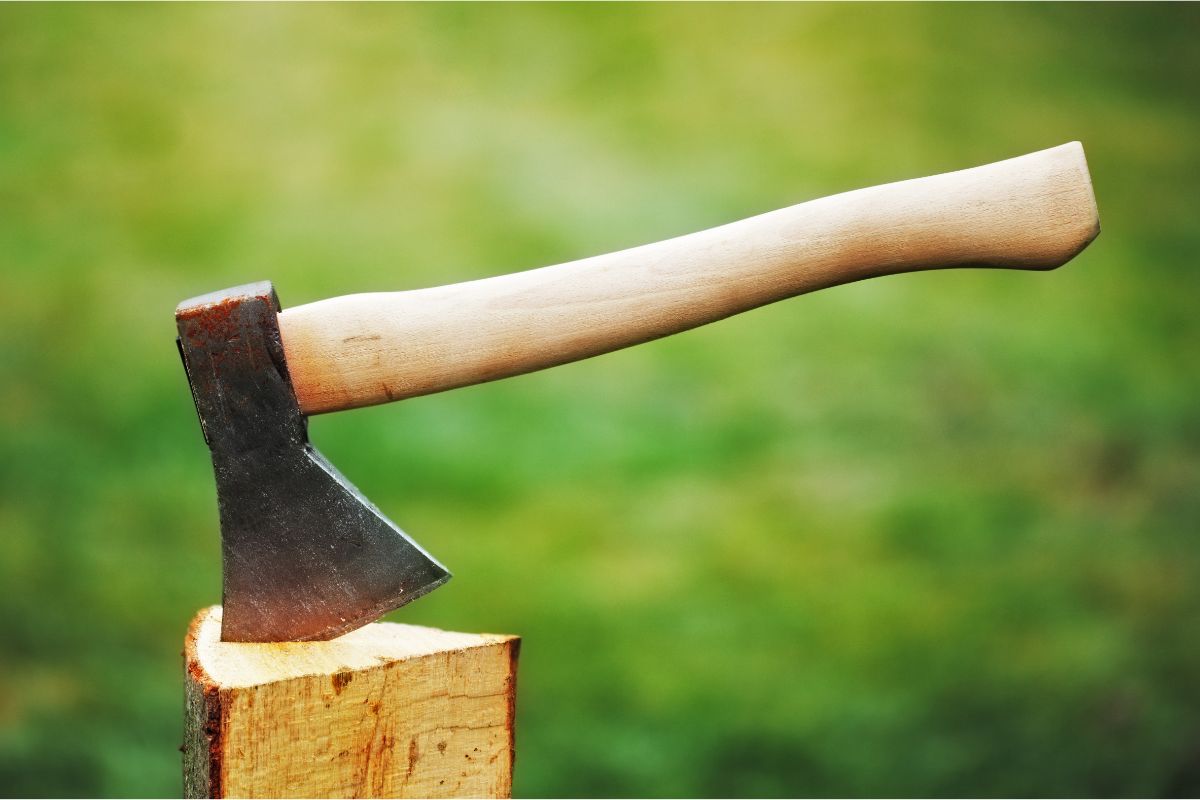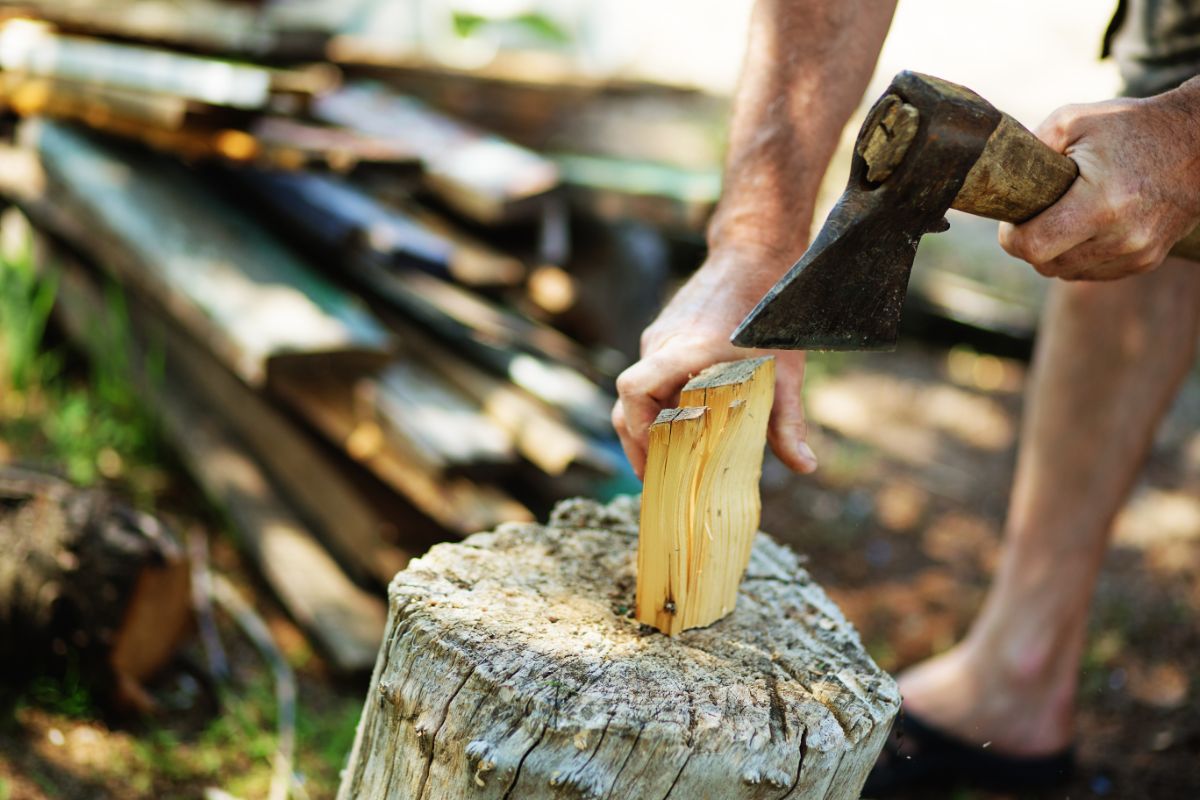Timbersports is an exciting extreme sport with competitors from all over the world! To compete in Timbersports, you must complete the required training courses created by the organization STIHL Timbersports, and enrol in their training camps.

There are two training camps, the beginner’s camp and the continuation camp, and both are located in STIHL Timbersports’ official training hall in Orsa, Sweden.
But for those who are totally new to Timbersports, is there a way you can practice at home before you book your flight to Sweden?
Yes, there is! Below, you’ll find 5 lumberjack-approved exercises to help get you ready for competitive logging. But first, let’s take a look at the history of Timbersports and competitive logging.
What Is Timbersports?
Timbersports is often described as the Super Bowl of competitive logging, and was established in 1985.
It is viewed by over 20 million viewers all over the world, and the tournament involves competitors participating in three sawing and three chopping activities for the chance to be awarded the title of ‘Original Extreme Sport King.’
The logging sports circuit has a grueling schedule, with annual shows taking place all over the country. Each discipline is timed, and the winner is the competitor who can complete each event in the fastest time. It’s not just about brawn and power, it’s about speed too!
While it is beneficial to have some natural strength, this will only take you so far, but this is where logger-specific workouts come in. After all, practice makes perfect, and the more you practice, the quicker – and stronger – you’ll be!
History Of Logger Sports
The origins of modern logger sports can be found in traditional lumber camps, where axe cutters would compete against each other to determine who the best logger was.
Besides Timbersports, other notable logging competitions include the Lumberjack World Championship, which has been held every year in Hayward, Wisconsin since 1960.
These extremely powerful men compete in 21 logging sport events such as log rolling, power saw cutting, tree climbing, and wood chopping. Lumberjack workouts and training are some of the best full body workouts you can do. Let’s take a look at 5!
5 Lumberjack Workouts

Axe Throwing (Downward Chop)
Once a lumberjack has felled a tree, the wood needs to be cut into pieces. Axe throwing isn’t just fun, it’s also great for training your upper body.
For this exercise, you’ll need a hatchet and something wooden for you to throw the hatchet at. If you live in a more urban area, and finding a safe wooden target is difficult, head to axe-throwing venues that are designed for you to perform the activity safely.
- Tip 1: Bring the axe directly behind your head, then quickly swing your arms forward at the shoulders.
- Tip 2: Let the axe go when it’s right in front of your head, maintaining a straight line towards the target.
- Tip 3: Make sure you follow the action through with your arms, so they end up behind you.
Even if you don’t hit the target every time, it’s still a worthy exercise.
The Tree Cutter (Lateral Chop)
While the best way to burn calories during a lumberjack workout is to cut some trees, if you don’t have access to timber, then this exercise can be a suitable substitute.
You’re going to need a heavy rock or a frozen turkey.
- Tip 1: Hold your heavy object of choice with both hands, holding it straight out in front of you with your arms extended fully.
- Tip 2: In a quick, chopping motion, swing your arms left to right.
- Tip 3: Make sure you twist at the hip when you swing, as this will help you chop for longer and wake up your core
- Tip 4: Continue until your turkey has thawed! Obviously, for the most extensive workout, use a heavy rock instead.
Deadlift
The deadlift is a famous strength exercise that simulates lifting the heavy logs lumberjacks lift every day. Regularly performing a deadlift gives you massive gains in strength, but you’re guaranteed to particularly feel the benefit in your lower back, glutes, and hamstrings.
- Tip 1: Load a barbell with your chosen weight, then approach the bar with your feet shoulder width apart.
- Tip 2: With your head up, your back straight, and your chest out, grab the bar (with your feet under the bar and your grip slightly outside your feet).
- Tip 3: Maintaining your posture, lower your glutes until they are parallel with your knees and no lower.
- Tip 4: Pushing up from your heels, press your glutes together and lift the weight until you are standing upright.
- Tip 5: Do 3–5 reps at a weight that is challenging, i.e. a weight that is heavy enough to give your muscles a workout, but light enough that you won’t hurt yourself. This is an exercise that gets easier with practice, and before you increase the weight, you should make sure your form is perfected first.
Bent Over Rows
Overall back strength is essential for lumberjacks, since they have to be able to lift chainsaws, logs, and all kinds of heavy objects off the floor.
- Tip 1: Load the barbell with the weight of your choice, then approach the barbell like you’re about to practice a deadlift.
- Tip 2: Reach down, grasping the bar at around shoulder width with your knees straighter than they would be when performing a deadlift.
- Tip 3: With your top half bent over, pull the bar to your stomach before lowering it for the next rep. You should really feel the benefits in your back and posterior delts when your muscles are contracting.
- Tip 4: Do 8–12 reps.
Farmer Carry
Lumberjacks often have to carry heavy weights for long distances, and this is why the farmer carry is such an essential exercise. Practicing this exercise will not only give you massive gains in shoulder development and grip strength, but improve your mental resilience too.
- Tip 1: First, place two objects of the same weight at your sides.
- Tip 2: Lift the weights, ensuring your head is back and your back is straight.
- Tip 3: Still gripping the weights, walk forward for as long as you can.
- Tip 4: Perform the next rep by lifting the weights and walking straight back to where you began.
- Tip 5: Do 5–8 reps.
Final Thoughts
I hope this article has given you some insight into what Timbersports is, how you can get involved, and the kind of exercises you can perform to get yourself ready for the beginner’s bootcamp!
Timbersports is a serious, grueling competition that one shouldn’t enter lightly, and that is why getting ready for the competition by enrolling in their boot camps and practicing with their required exercises is essential to performing well and safely.
It’s recommended that you practice these routines up to 3 times a week, giving yourself at least a day of rest in between. To get the best results, ensure you stay limber by stretching before and after heavy lifts like the deadlift.
Soon, you’ll have the power to chop down trees, enter Timbersports and be crowned ‘Original Extreme Sport King’ in no time.
Related Posts
- What Kinds Of Woods Are Used In Timbersports?
Ever wondered what the lumberjacks of the world do for sports? Timbersports is an incredible…
- On the block: A (Brief) Guide on the Worldwide History of Timber Sports and Competitive Woodchopping
The Worldwide History of Timber Sports and Competitive Woodchopping Do you want to know all…
